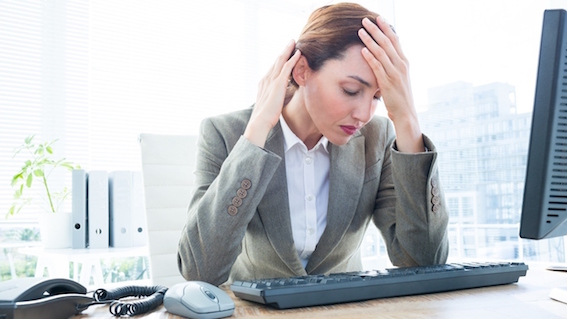
Physical inactivity is commonly labelled as one of the most worrying and largest public health issues of the 21st century. It’s also accepted that being physically active is good for your mental and physical wellbeing.
BUT, we are faced with a situation where around four in five workers in the UK have a desk job and most of our work is sedentary. On average, desk workers are sitting up to nine and a half hours a day. Yes – you read that correctly - NINE AND A HALF HOURS PER DAY!
As employers, we should clearly be taking responsibility to make a change through creating a more active-oriented work environment.
This month’s article focusses on how this can be achieved in a business of any size, without spending large amounts of money, by implementing simple sustainable ideas.
The Benefits
First and foremost, physical activity is a natural mood elevator; studies show it relieves mild anxiety and depression, improves energy, and increases a general sense of wellbeing. It is therefore easy to make the natural assumption that companies whose workers are active both on and off the job will have a higher morale.
Couple this with the more obvious benefits of staying active such as a lower risk of heart disease, stroke, obesity, diabetes, musculoskeletal problems and many other improvements (not to mention the cost to business that this brings), and you are left with a pretty compelling reason to take this seriously.
A recently published study in the USA, of more than one million people, identified that being physically active for one hour per working day would negative the increased health risks of sitting for more than eight hours per day.
The same study also suggested a link between the same hour of activity and a lower chance of developing mental health deterioration, including symptoms of depression and burnout, in comparison to those who remain physically inactive.
So here are the simple areas to consider to get your workforce moving:
Make a stand
• Give employees the option of standing desks throughout the day. Rather than buying one for all employees, consider setting up a “pod” of standing desks for people to use as they wish – and make sure everyone gets a turn if they wish to.
• Remove the chairs from a meeting room and make a no-chair policy for the room (then stick to it), or make standing at long meetings an acceptable option.
• Encourage telephone calls standing up – there is evidence that people can communicate more powerfully when standing.
Make a Move
• Introduce walking meetings. These can be especially useful for 1:1s among managers and their employees for a less formal check-in.
• Take the stairs not the lift. Put signs up in the lift to encourage people and make stairwells more appealing with artwork or motivational signage.
• Move around the workspace. Encourage conversation rather than emailing or messaging – it might be worth considering office layout to encourage walking.
Think ‘desk’
• Consider hot desking as an alternative to standard seating. Many UK corporates have moved to having a more agile workplace. This means workers sit in a different seat every day, taking their belongings with them as they move around. This also helps to foster wider working relationships.
• Swap some of your chairs for stability balls for those workers who wish to use them. They do help to build core strength but need to be carefully considered if a worker is prone to lower back problems.
Technology to the help
• Invest/subsidise in wearable technology or pedometers. Some health and wellbeing providers (like Vitality) will provide these at low cost to help kick start a project. The gadgets can be set to give timely reminders to move, and groups/teams can enter online leagues for fun to see who can move the most.
• Small devices such as a portable pedal machine can counter some of the harmful effects of sedentary working, according to a small study published in the British Journal of Sports Medicine.
Encourage all the time
• Put a simple A4 poster at workstations reminding workers of the benefits of moving.
• Adopt the ‘5 in 55’ rule. Every 55 minutes get up and MOVE. Encourage workers to take brief, two to three minute fitness breaks throughout the day for brisk walking, stretching, or stair climbing.
• Introduce an active lunch break programme – ban eating at the desk and organise lunchtime walking, running, cycling, or yoga groups.
Contact us
ViiSana specialises in implementing wellbeing programmes through the implementation of company-wide Vitality Life and Health insurance. If you would like to discuss your company’s individual health concerns/challenges, or if you would just like to discuss ideas for implementing a programme at your business, please get in touch:
Email: paul.ollerton@viisana.com
Phone: 0333 772 0761
Twitter/Instagram/Facebook/





